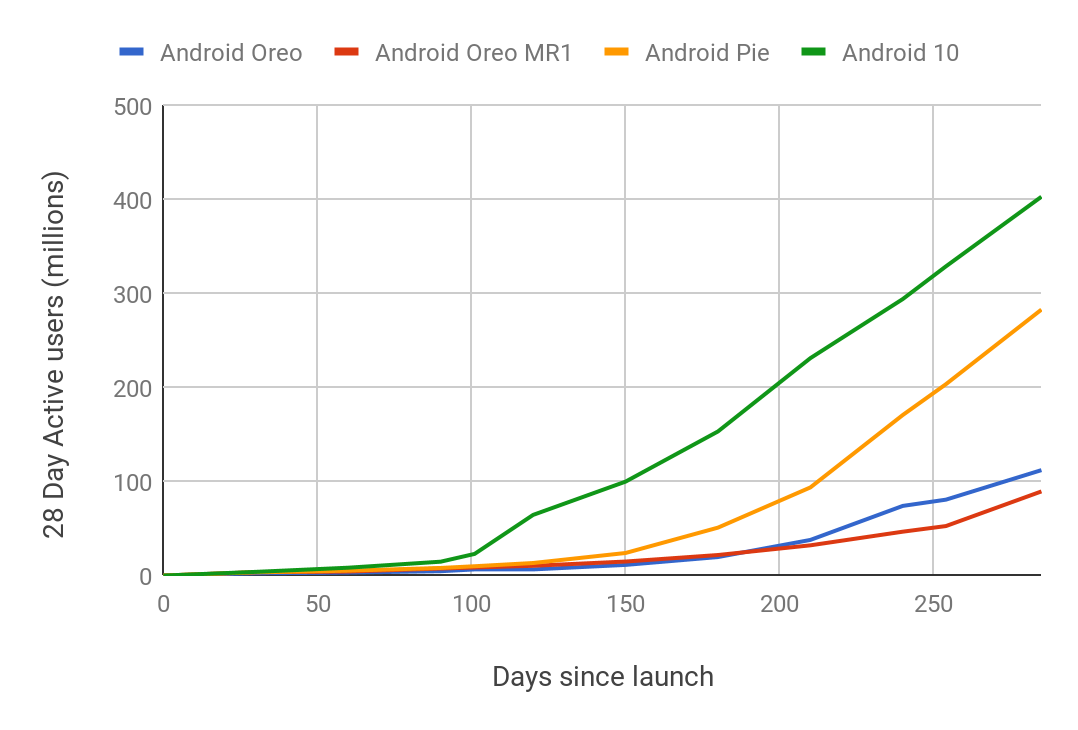 ☰
🔍
☰
🔍
09 julho 2020

Posted by Eddie Hsu (Technical Program Manager), Brent VerWeyst (Product Manager), Maya Ben Ari (Product Manager), Amith Dsouza (Technical Account Manager), Iliyan Malchev (Project Treble Architect)
Over the past few years we’ve introduced new capabilities that enable us to deliver updates more uniformly, quickly, and efficiently to Android devices. These capabilities include:
Thanks to these efforts, the adoption of Android 10 has been faster than any previous versions of Android. Android 10 was running on 100 million devices 5 months post launch – 28% faster than Android Pie.

Below are the major themes in updatability this year:
OEM Developer Previews: In Android 11, device makers (OEMs) are continuing their developer previews ahead of the official launch. Seven OEMs have released Developer Preview builds on 13 devices to provide app developers with diverse hardware as they test for compatibility.
Google Play system update: 21 OS components are now updatable, including 9 additions in Android 11 focused on improving privacy, security, and developer consistency across devices. Highlights include an enhanced permissions component that standardizes user and developer access to critical privacy controls on Android devices, a Neural Networks API (NNAPI) component that optimizes performance and guarantees consistent APIs across devices, and a Tethering component for improved interoperability. The new updatable OS components in Android 11 are: Tethering, NNAPI, Cell Broadcast Receiver, adbd, Internet Key Exchange, Media Provider, statsd, WiFi, and SDK extension.
Generic Kernel Image: Our ongoing updatability work extends to the Linux kernel itself, with initiatives such as 6-year LTS support. In Android 11, we are further isolating common code in the Android Linux kernel to create a Generic Kernel Image (GKI) that works across all Android devices, as well as to enable faster security deployments. Stay tuned for a more detailed post on GKI in the coming months.
Virtual A/B: Most OS updates are not delivered via Google Play. Instead, they use separate third-party Over-the-Air (OTA) services that differ among the various OEMs. These services use a mechanism that, while very space efficient, has the disadvantage of being slow to apply, rendering the device inoperable for the duration. To solve this problem, in Android Nougat we launched a mechanism called "A/B OTA" (aka Seamless Updates). A/B OTAs have the advantage of appearing to be near-instant from the user's perspective, since they apply in the background and become active on the next reboot. However, they doubled the amount of storage reserved for the OS itself, limiting adoption among OEMs.
We’ve developed a new OTA mechanism – Virtual A/B – that combines the benefits of the previous two: being seamless from the user's perspective while requiring less storage. We are working closely with our OEM partners to begin implementing Virtual A/B in Android 11 devices, making OTAs as frictionless as possible. Going forward, Virtual A/B will be the only supported OTA mechanism in Android.
We’re excited by the increased adoption of Android and are grateful for the close collaborations with our chipset and OEM partners to deploy updates earlier. We continue to work on a number of enhancements in the platform and infrastructure to make it easier for developers and users to benefit from the latest versions of Android.
Reminder that the Android engineering team will host a Reddit AMA today at 12:00PM PST to answer your technical questions about Android 11. See this post for details and to submit your questions.